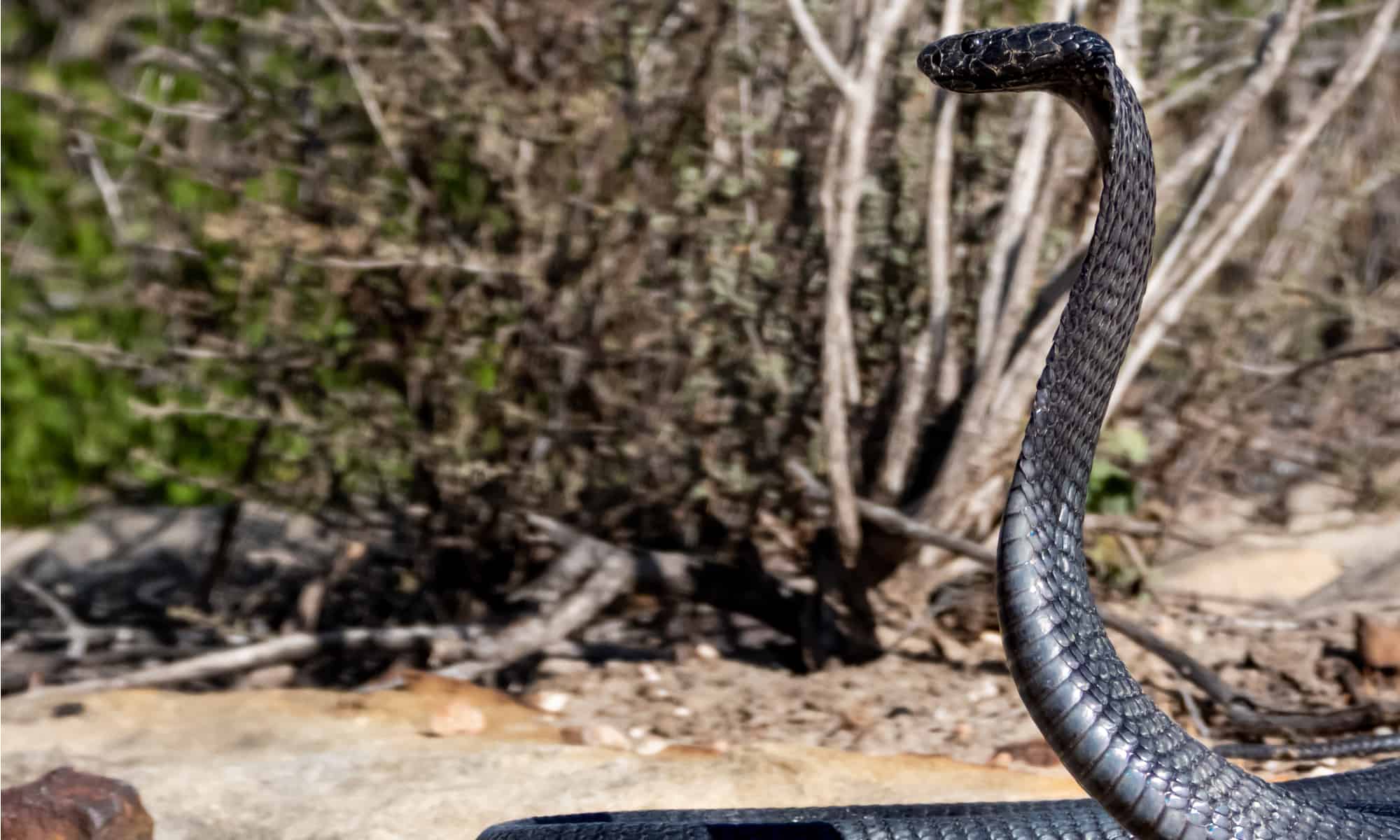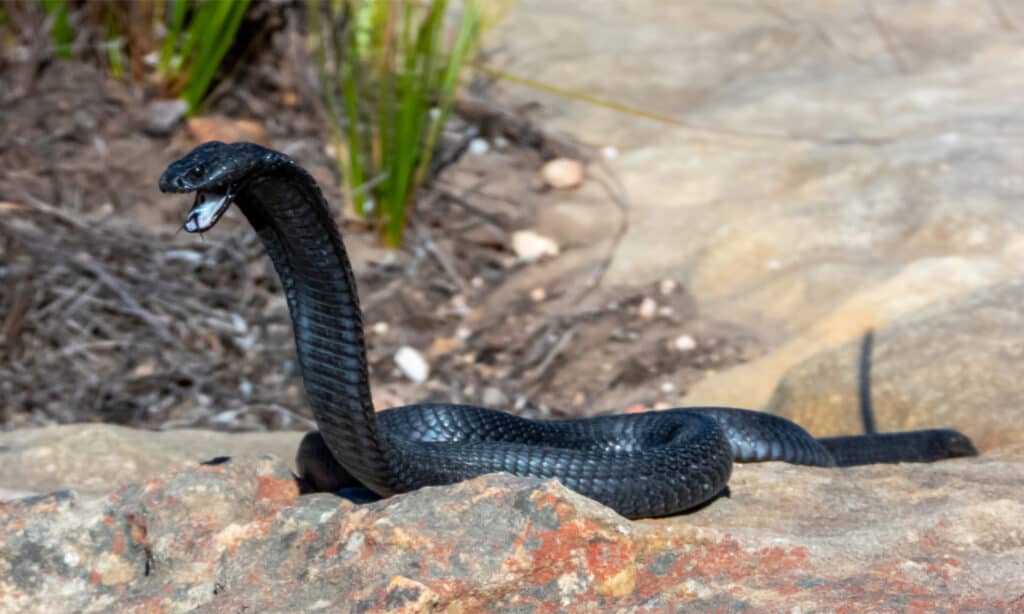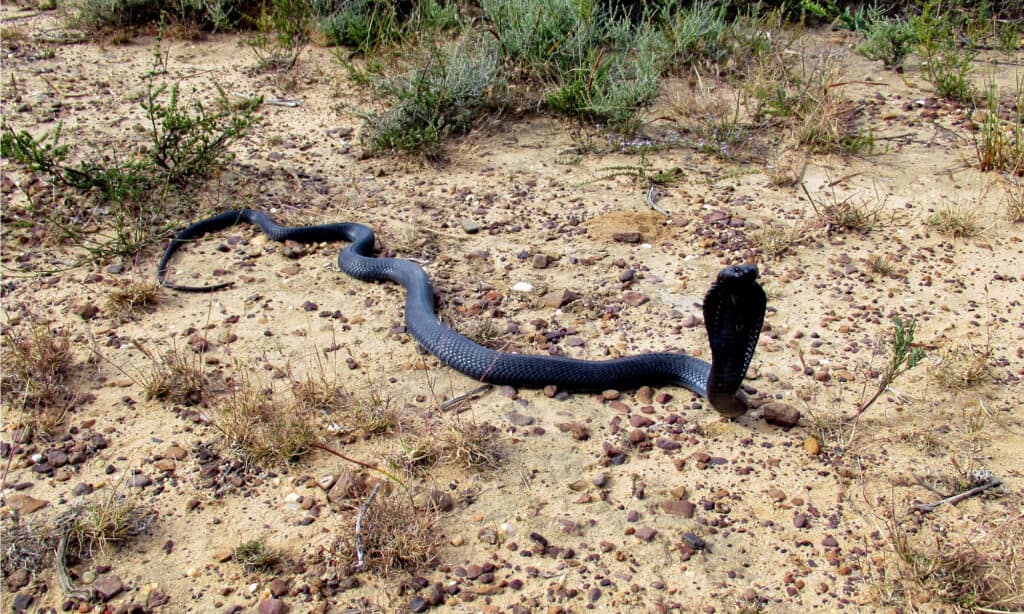Continue reading for our analysis...

The kiss of death is about to happen, and this poor monitor lizard doesn’t even know it. By the end of this video, we can see that this lizard was attempting to eat this poisonous cobra as a meal. However, he soon realized this was a mistake, but by this point, it was too late.
Black Cobra Sighting in Pakistan
The next YouTube clip shown at the end of this blog post takes us to Pakistan. Within Pakistan, we are in the Multan division, the district of Khanewal Punjab. The YouTube channel that filmed and posted this video is the Holistic Channel100. According to their description, they are a professional snake rescue team. This team rescues snakes from local houses or fields in Punjab, Pakistan.
Is It Normal Behavior For Black Cobras to Attack Monitor Lizards?

Cobras are not just snake eaters, they also eat large lizards such as monitor lizards.
©iStock.com/Willem Van Zyl
Cobras are not exclusive snake eaters; they also have a liking for eating large lizards. While their primary diet primarily comprises snakes, they occasionally capture and dine on monitor lizards.
In habitats like mangroves, cobras coexist and must compete with other large predator carnivores, including saltwater crocodiles, which can overpower and consume even the largest water monitor lizards.
Tigers, leopards, king cobras, and pythons are also known to prey on these seemingly resilient reptiles.
Black Cobra Lethal Bite

Cobras can live up to 10 years in the wild.
©Willem Van Zyl/Shutterstock.com
At the start of this video, we see a giant monitor lizard that seems frozen in place. And that is because, for lack of a better term, it is frozen. Wrapped around his body, we see a long black cobra. This cobra has a good bite down on this back leg. This is not just just any bite; this is a lethal bite.
About a quarter of the way through this video, we see a close-up shot of this cobra and lizard. We can see a clearer view of the cobra coiled around this lizard. And we can see that in this monitor lizard’s mouth is the tail of this cobra. This tells us that this lizard gave the fight of its life before the bite happened.
At the very end of the video, we see this monitor lizard up in a tree, and it has a bit on the end of this snake. (This was most likely the very beginning of the video, which led up to the snake coiling around this lizard.) If you look closely, we can see that this monitor lizard has a grip on the tail of this snake! So, what probably happened was this monitor lizard went to grab this snake, and then once it got down, he received the kiss of death.
What Does a Monitor Lizard Eat?
Monitor lizards of the genus Varanus are found locally in Africa, Asia, and Oceania. It’s important first to understand just how large these lizards are. As we can see from the video, they are quite big. They can weigh up to 360+ pounds.
According to the monitor lizards organization, they are what’s called opportunistic feeders. This means they will eat whatever is available and closest to them. This is why it’s most likely that this lizard was striving to eat this snake without knowing the danger.
As carnivores, monitor lizards will eat things such as insects, eggs, birds, fish, turtles, small reptiles, small mammals, and even dead animals if need be.
Thank you for reading! Have some feedback for us? Contact the AZ Animals editorial team.







